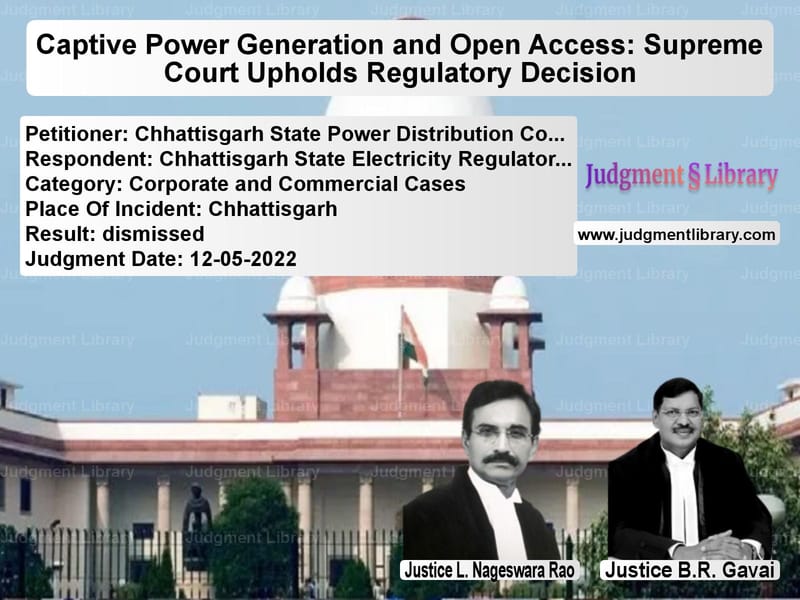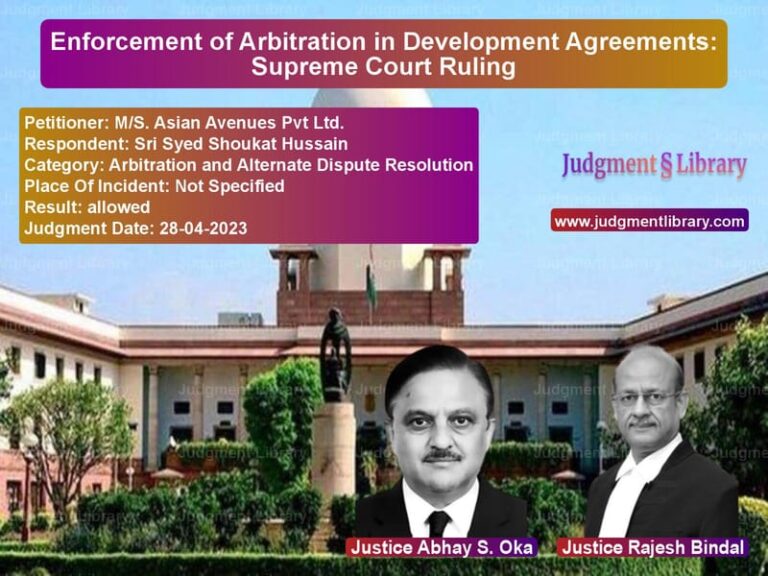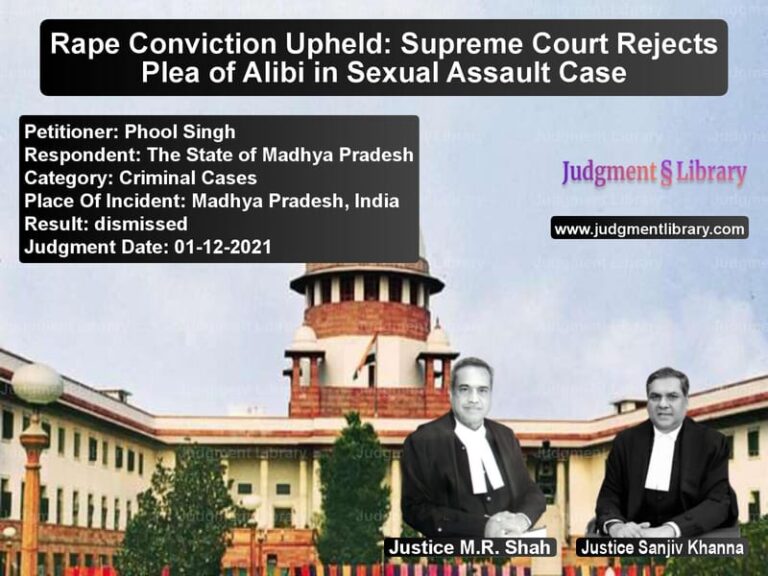Captive Power Generation and Open Access: Supreme Court Upholds Regulatory Decision
The Supreme Court of India, in the case of Chhattisgarh State Power Distribution Company Ltd. v. Chhattisgarh State Electricity Regulatory Commission & Another, addressed key issues related to captive power generation, open access, and the regulatory framework governing electricity distribution. This judgment, delivered on May 12, 2022, clarifies the interpretation of the Electricity Act, 2003, and the Electricity Rules, 2005, particularly regarding the eligibility criteria for captive power plants and their ability to supply power to sister concerns.
Background of the Case
The case arose from a petition filed by M/s Shri Bajrang Power and Ispat Ltd. (SBPIL), a company that established a captive generation plant. It sought permission from the Chhattisgarh State Electricity Regulatory Commission (CSERC) to transmit power to its sister company, M/s Shri Bajrang Metallics and Power Ltd. (SBMPL), under open access provisions.
SBPIL submitted that SBMPL held 27.6% of its equity shares and that more than 51% of the electricity generated would be consumed by them. The request was resisted by the appellant, Chhattisgarh State Power Distribution Company Ltd., which argued that SBPIL’s internal consumption was only 14.16%, while SBMPL’s consumption was 57.87%, making the arrangement non-compliant with regulatory requirements.
Regulatory and Appellate Proceedings
The CSERC, in its order dated October 14, 2005, ruled in favor of SBPIL, holding that the supply of power to SBMPL would qualify as captive consumption under Section 9 of the Electricity Act, 2003, and Rule 3 of the Electricity Rules, 2005. The order was subject to conditions:
- The consumption by captive users must be at least 51% of the electricity generated annually.
- The distribution company could levy wheeling charges as per existing rates.
- The company could enter into necessary agreements for the sale of surplus power.
Aggrieved by this decision, the distribution company appealed before the Appellate Tribunal for Electricity (APTEL), which dismissed the appeal. The matter was then escalated to the Supreme Court.
Arguments Presented by the Appellant
The appellant argued that:
- The order of CSERC and APTEL was contrary to the provisions of Rule 3 of the Electricity Rules, 2005.
- SBPIL could not claim the benefit of captive power generation unless it consumed at least 51% of the power it generated.
- SBMPL’s consumption exceeded its proportional ownership share, making the arrangement non-compliant.
Arguments Presented by the Respondents
The respondents contended:
- The regulatory commission had correctly interpreted the law and upheld the objectives of captive power generation.
- The Supreme Court had previously held that captive users were not liable to pay additional surcharges under Section 42(4) of the Electricity Act.
- The National Electricity Policy supported group captive schemes to promote industrial growth and employment.
Supreme Court’s Analysis
The Court examined the relevant statutory provisions, including:
- Section 9 of the Electricity Act, 2003, which allows any person to construct, maintain, or operate a captive generating plant for their own use.
- Rule 3 of the Electricity Rules, 2005, which stipulates that a power plant qualifies as captive if:
- At least 26% of its ownership is held by captive users.
- At least 51% of the electricity generated is consumed by captive users.
- The National Electricity Policy, which encourages captive generation to enhance reliability, quality, and cost-effectiveness of power supply.
Observing that SBMPL held 27.6% equity in SBPIL and that their combined consumption exceeded 51%, the Court concluded that the requirements of Rule 3 were satisfied.
Key Judicial Observations
The Court ruled:
“A liberal provision has been made in Section 9 of the Act to promote captive power generation, ensuring cost-effective electricity supply and industrial growth.”
“An association of corporate bodies can establish a captive power plant, provided they meet the statutory consumption requirements.”
“Since the joint consumption by SBPIL and SBMPL exceeded 51%, the conditions under Rule 3 were satisfied, and no interference was warranted.”
Conclusion
The Supreme Court dismissed the appeal, affirming that SBPIL’s supply to SBMPL constituted captive consumption and did not violate regulatory provisions. This ruling clarifies the legal framework for captive power plants, reinforcing the regulatory intent to promote industrial self-sufficiency in electricity generation.
Petitioner Name: Chhattisgarh State Power Distribution Company Ltd..Respondent Name: Chhattisgarh State Electricity Regulatory Commission & Another.Judgment By: Justice L. Nageswara Rao, Justice B.R. Gavai.Place Of Incident: Chhattisgarh.Judgment Date: 12-05-2022.
Don’t miss out on the full details! Download the complete judgment in PDF format below and gain valuable insights instantly!
Download Judgment: chhattisgarh-state-p-vs-chhattisgarh-state-e-supreme-court-of-india-judgment-dated-12-05-2022.pdf
Directly Download Judgment: Directly download this Judgment
See all petitions in Company Law
See all petitions in Corporate Compliance
See all petitions in unfair trade practices
See all petitions in Judgment by L. Nageswara Rao
See all petitions in Judgment by B R Gavai
See all petitions in dismissed
See all petitions in supreme court of India judgments May 2022
See all petitions in 2022 judgments
See all posts in Corporate and Commercial Cases Category
See all allowed petitions in Corporate and Commercial Cases Category
See all Dismissed petitions in Corporate and Commercial Cases Category
See all partially allowed petitions in Corporate and Commercial Cases Category







